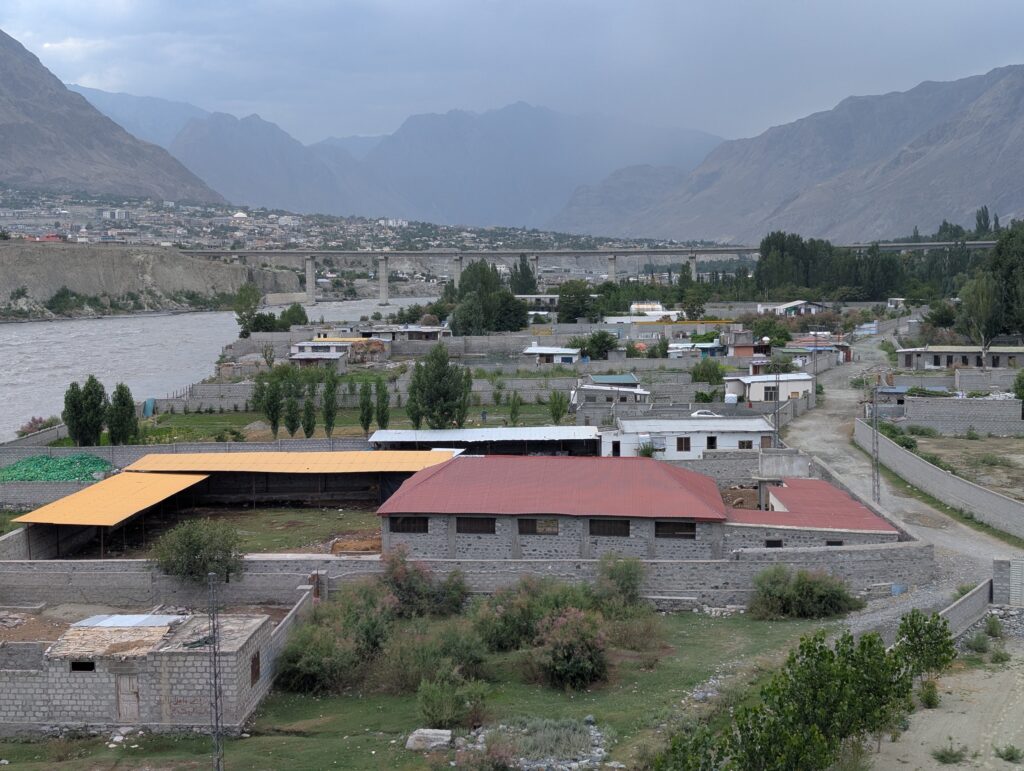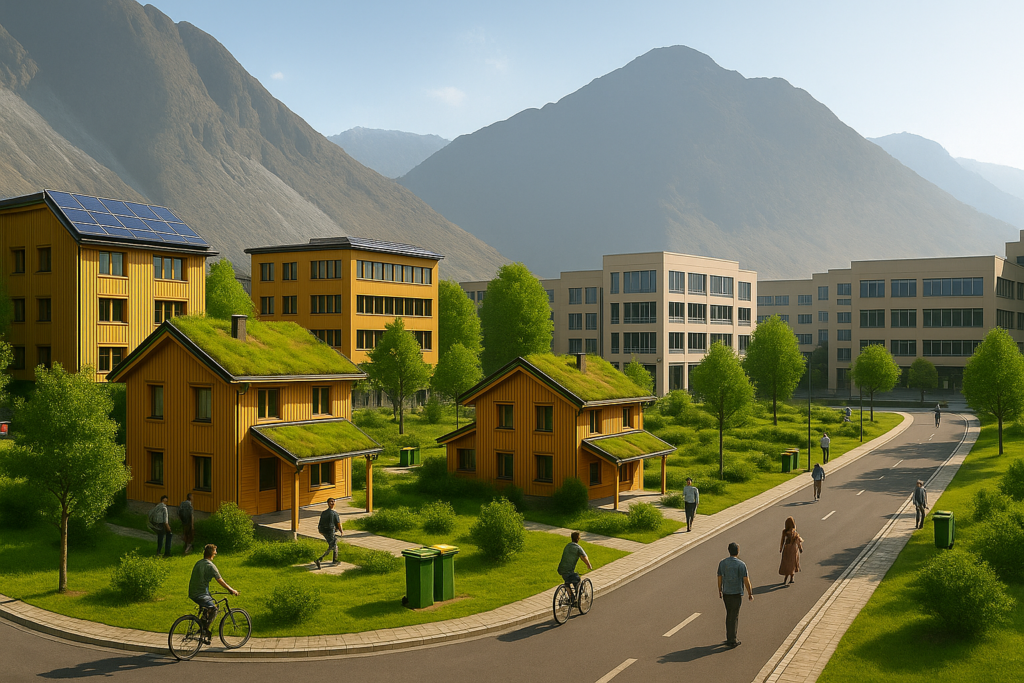What’s Happening in Gilgit-Baltistan?
Settled in the towering Karakoram and Himalayan ranges, Gilgit-Baltistan (GB) is home to some of the world’s highest peaks, longest glaciers, and oldest living cultures. Known for its natural beauty, the region is a jewel in Pakistan’s crown—but beneath its breathtaking scenery, an alarming situation is unfolding.
Climate change is no longer a distant threat for the people of Gilgit-Baltistan—it is happening here, right now.
The once stable glaciers of Shimshal, Gulmit, Shisper, Hoper, and Ultar are melting rapidly. Glacial lakes are forming and bursting unpredictably. Forests are being cleared to build hotels and guesthouses. Waste, especially plastic, is choking the valleys. The question we must ask is: How did we get here? And more importantly, how can we reverse this before it’s too late?
Who Is Affected?
The people of Gilgit-Baltistan residents of districts like Hunza, Nagar, Gojal, Ghizer, Astore, Skardu, and Chilas are the first victims. Villages settled between towering glaciers and steep mountains are now in red zones: danger areas prone to Glacial Lake Outburst Floods (GLOFs), landslides, and unpredictable weather require extra caution.
Families who’ve lived in the same valleys for generations are facing displacement. Agriculture was once the backbone of the local economy is suffering due to changing weather patterns and reduced water flow from melting glaciers. Tourists, too, are indirectly affected, as the very nature they come to admire is under threat.
Here are some Video Links from different Media agencies from GB showing effects of Climate change.(Click on the Names to watch the Videos)
HUNZA NEWS
PAMIR TIMES.
When Did This Begin?
The turning point began in the early 2000s, shortly after the China-Pakistan Economic Corridor (CPEC) project initiated the development of the Karakoram Highway (KKH), a trade route designed to connect western China with Pakistan and beyond.
Before this development, Gilgit-Baltistan was largely agriculture-based and forested, with little unplanned urbanization. The arrival of roads, hotels, and increased tourism brought economic opportunities but at a heavy environmental cost.
Now, less than two decades later, glaciers are collapsing, temperatures are rising (Pakistan Meteorological Department), and climate disasters are becoming a yearly occurrence.
Where Is It Happening?
The CPEC route—which cuts through key GB districts like Hunza, Nagar, Gojal, Gilgit City, and Chilas has become a major driver of change.
While the highway was meant to facilitate trade, it also opened the gates to unplanned urbanization and tourism. Forest lands were cleared to build hotels. Waste management infrastructure couldn’t keep pace with the rising population. Plastic pollution began to pile up, especially in popular tourist areas. And the worst part? This pollution and deforestation are affecting not just the route, but neighboring valleys and glacier systems too. Climate change is never localized.
Why Is This Happening?
There are three major reasons for Gilgit-Baltistan’s climate crisis:
1.Unplanned Urbanization.
With the rapid growth of tourism, local communities began building hotels, restaurants, and shops without environmental regulation or planning. Forests were cut down to make room for concrete structures, which leads disturbed ecosystem

2.Plastic Pollution and Lack of Waste Management.
There are still no large-scale recycling systems in GB. Waste especially plastic is often dumped in rivers, buried in soil, or burned in open air. This not only pollutes the land and water but contributes to greenhouse gas emissions.
3.Tourism Without Regulation.
While tourism brings income, it also brings thousands of vehicles, plastic bottles, and fuel consumption. When tourism isn’t regulated, its environmental footprint becomes dangerous.
How Can We Fix This?
Before offering solutions, let’s answer three key questions about unplanned urbanization:
Q1: What is unplanned urbanization, and why is it dangerous in mountain regions like Gilgit-Baltistan?
Answer: Unplanned urbanization means constructing buildings and expanding cities or towns without considering environmental impacts. In GB, this has led to the destruction of natural forests and increased pressure on fragile ecosystems, resulting landslides, floods, and water scarcity more common.
Q2: How can we make urban development more sustainable in Gilgit-Baltistan?
Answer:
• Zoning laws must be introduced and enforced to control where and how buildings are made.
• Promote eco-tourism small-scale guesthouses built with local materials and energy-efficient designs.
• Introduce green building codes and environmental assessments for any new development.

Q3: What role can local communities play in reducing environmental harm?
Answer:
• Participate in community-driven reforestation programs.
• Switch to sustainable energy sources like solar panels.
• Educate tourists and locals about waste segregation and composting.
• Avoid using single-use plastics and promote local, biodegradable alternatives.
How Does Pollution Impact Climate in Gilgit-Baltistan?
Pollution is more than just an ugly view but it also accelerates climate change. Here’s how: • Plastic waste releases harmful methane and ethylene gases when exposed to sunlight both powerful greenhouse gases.
• Burning waste, a common practice in GB, produces carbon dioxide, which settles on glaciers and causes them to absorb more heat.
• Water pollution from dumped trash can disrupt aquatic life and reduce water quality for agriculture.
Solutions to Pollution and Climate Crisis in GB.
✅ Short-Term Solutions
• Immediate ban on single-use plastics in tourist hubs like Hunza and Nagar.
• Install waste bins and promote recycling in public places.
• Community clean-up drives led by schools and local NGOs.
🌱 Long-Term Solutions
• Build regional recycling and composting facilities.
• Launch an Environmental Education Program in schools across GB.
• Government support for reforestation projects and preservation of native tree species.
Current Glaciers at Risk.
Many glaciers in GB are already on the climate frontlines:
- Shimshal Glacier (Hunza)
- Gulmit Glacier
- Shisper Glacier (linked to the 2022 GLOF incident)
- Ultar Glacier
- Hopper Glacier (Nagar)
- Tagafari Glacier
These glaciers are not only melting they’re transforming into glacial lakes, which can burst and wipe out entire villages downstream. The people living near these glaciers are in critical red zones and need immediate climate-resilient infrastructure and evacuation planning.
What’s Next for Gilgit-Baltistan?
Climate change is not a distant fear for the people of GB—it is their daily reality. Without urgent action, we risk losing glaciers, biodiversity, and even human lives. But with community-driven action, smart policy, and responsible tourism, Gilgit-Baltistan can lead the way as a model for sustainable mountain development.
The people of GB have lived in harmony with nature for centuries. It’s time to return to those roots not with fear, but with hope, innovation, and resilience.
Conclusion: Why We Must Act Now.
If we continue down this path of unchecked development and pollution, Gilgit-Baltistan’s glaciers will become history, its rivers dry, and its valleys unlivable. But it’s not too late.
By understanding the “Who, What, When, Where, Why, and How” of this climate crisis, we can work toward a sustainable, green, and safe future not just for GB, but for all of Pakistan.
🌍 Let’s sustain tomorrow together.
